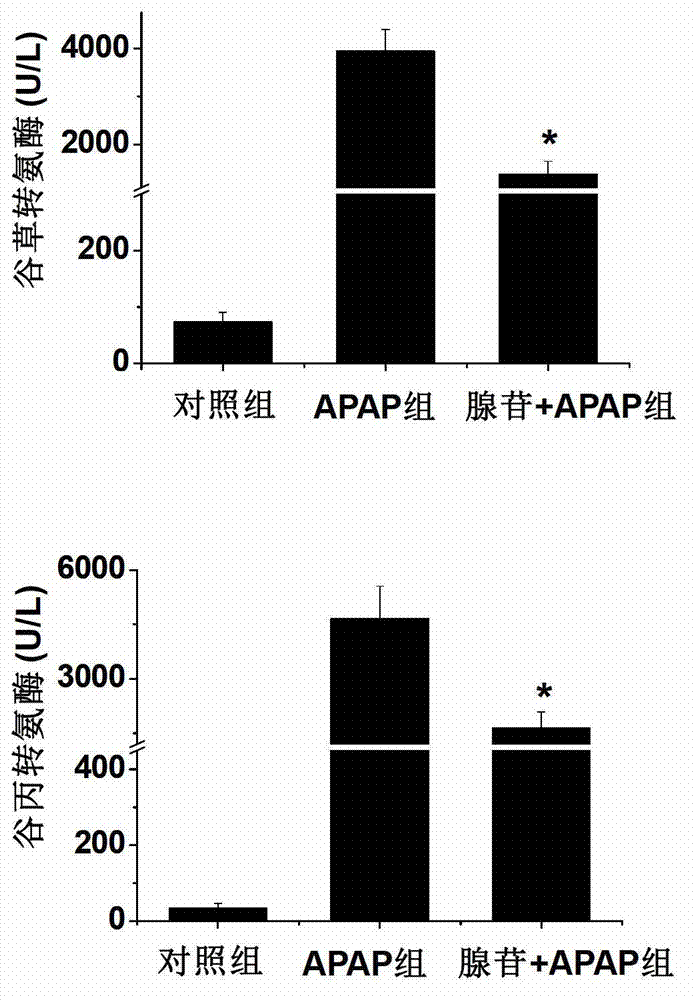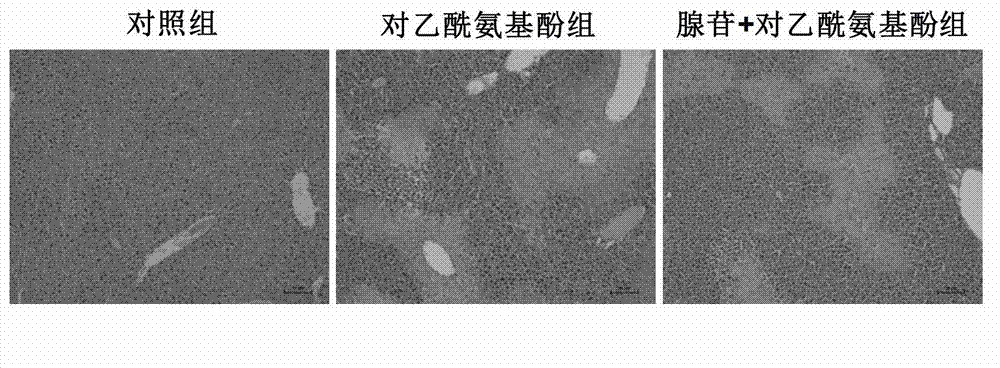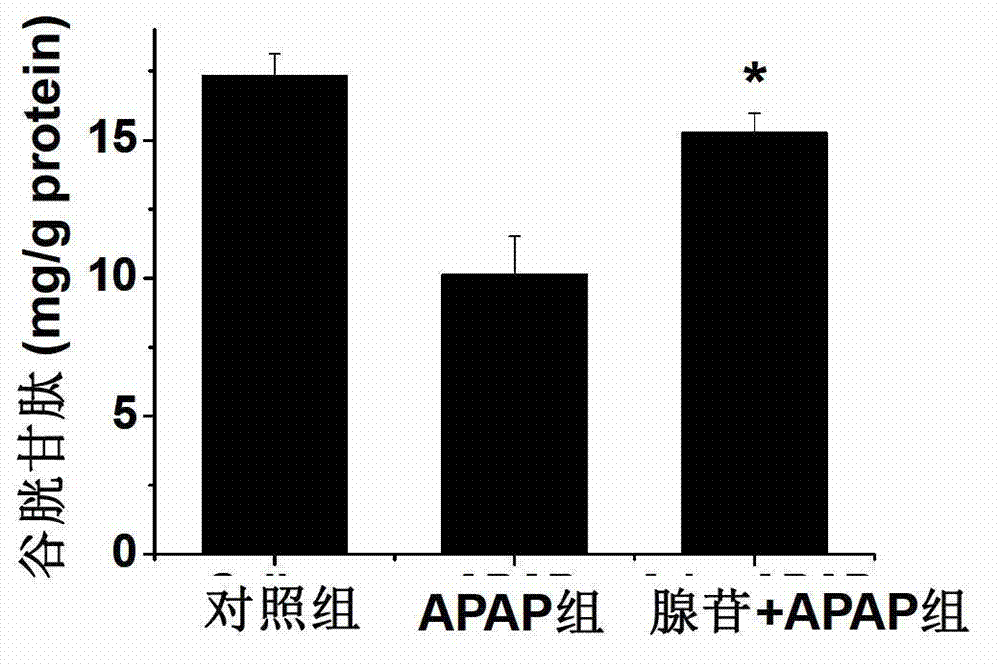Application of adenosine and derivatives thereof in prevention and treatment of medicament-induced liver injury
A technology of drug-induced liver injury and adenosine derivatives, applied in the field of medicine, can solve the problems of difficulty in reducing the mortality rate of acute liver failure, inability to effectively prevent acute liver failure, etc.
- Summary
- Abstract
- Description
- Claims
- Application Information
AI Technical Summary
Problems solved by technology
Method used
Image
Examples
Embodiment 1
[0037] (1) Animal model
[0038] The experimental animals were eight-week-old male C57BL / 6 (WT) mice. Raised under standard experimental conditions: 12-hour light-12-hour dark cycle, free access to water and food. APAP is used to establish a mouse model of acute liver failure, and APAP (300mg / kg) is administered by intragastric administration. WT mice were randomly divided into three groups. The first group was the control group (Saline), which was treated with the corresponding drug medium (normal saline) during the experiment; the second group was the APAP group (APAP), and APAP was administered intragastrically; The group was the adenosine treatment group (Ado+APAP), Adenosine (1.5mmol / kg) and APAP were mixed as a mixed solution for intragastric administration. After APAP gavage for 24 hours, blood and liver were collected for evaluation of liver injury.
[0039] (2) Determination of serum enzyme activity
[0040] After the whole blood was collected, it was naturally co...
Embodiment 2
[0055] (1) Animal model
[0056] The experimental animals were eight-week-old male C57BL / 6 (WT) mice. Raised under standard experimental conditions: 12-hour light-12-hour dark cycle, free access to water and food. APAP is used to establish a mouse model of acute liver failure, and APAP (300mg / kg) is administered by intragastric administration. WT mice were randomly divided into three groups. The first group was the control group (Saline), which was treated with the corresponding drug medium (normal saline) during the experiment; the second group was the APAP group (APAP), and APAP was administered intragastrically; The group was adenosine monophosphate treatment group (AMP+APAP), and AMP (3mmol / kg) and APAP were mixed as a mixed solution for intragastric administration. After APAP gavage for 24 hours, blood and liver were collected for evaluation of liver injury.
[0057] (2) Determination of serum enzyme activity
[0058] After the whole blood was collected, it was natura...
Embodiment 3
[0073] (1) Animal model
[0074]The experimental animals were eight-week-old male C57BL / 6 (WT) mice. Raised under standard experimental conditions: 12-hour light-12-hour dark cycle, free access to water and food. APAP is used to establish a mouse model of acute liver failure, and APAP (300mg / kg) is administered by intragastric administration. WT mice were randomly divided into four groups. The first group was the control group (Saline), which was treated with the corresponding drug medium (normal saline) during the experiment; the second group was the APAP group (APAP), and APAP was administered intragastrically; Adenosine treatment group (Ado+APAP) was divided into group Ⅲa and group Ⅲb. Group Ⅲa administered Adenosine (0.1mmol / kg) and APAP as a mixed solution orally, and group Ⅲb administered Adenosine (5mmol / kg ) mixed with APAP for intragastric administration; the fourth group is adenosine monophosphate treatment group (AMP+APAP), and is divided into Ⅳa group and Ⅳb grou...
PUM
 Login to View More
Login to View More Abstract
Description
Claims
Application Information
 Login to View More
Login to View More - R&D
- Intellectual Property
- Life Sciences
- Materials
- Tech Scout
- Unparalleled Data Quality
- Higher Quality Content
- 60% Fewer Hallucinations
Browse by: Latest US Patents, China's latest patents, Technical Efficacy Thesaurus, Application Domain, Technology Topic, Popular Technical Reports.
© 2025 PatSnap. All rights reserved.Legal|Privacy policy|Modern Slavery Act Transparency Statement|Sitemap|About US| Contact US: help@patsnap.com



